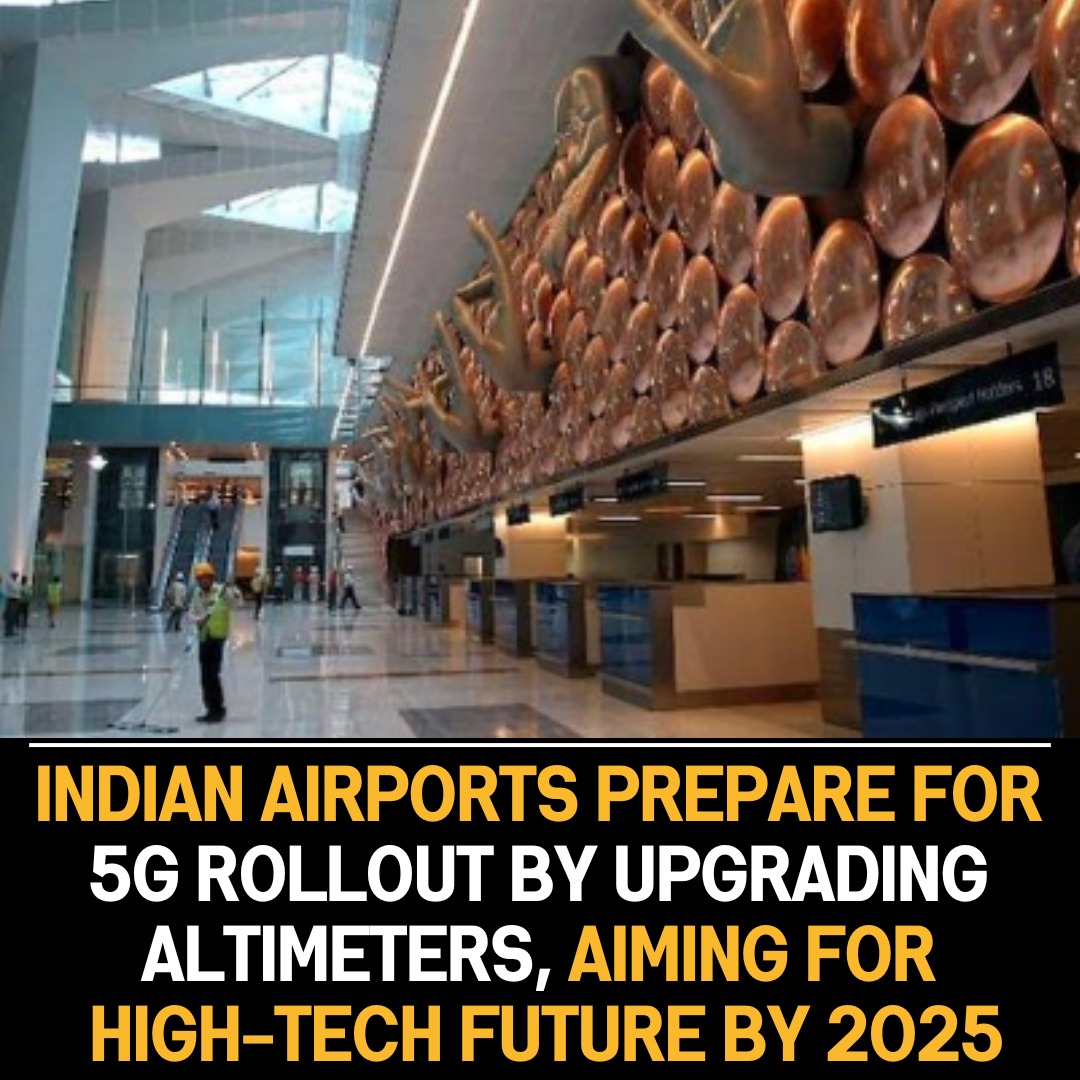In a significant development, starting January 1, 2025, individuals in the vicinity of Indian airports will gain access to 5G services. This move comes as a result of a comprehensive initiative to replace old aircraft altimeters by December 31, 2024, ensuring the compatibility of the 5G infrastructure with existing aviation technology.
The decision to introduce 5G services near airports marks a milestone in India’s technological advancement and connectivity landscape. With the increasing demand for high-speed and reliable internet services, the deployment of 5G is anticipated to bring about transformative changes in communication, business, and daily life.
The critical aspect of this initiative lies in the replacement of outdated aircraft altimeters. These altimeters, essential for aircraft navigation, operate on a frequency band close to that designated for 5G services. To avoid interference between the two systems, the replacement of altimeters becomes imperative for the seamless and safe coexistence of 5G technology and aviation operations.
The deadline for the replacement of altimeters by December 31, 2024, reflects a concerted effort to address potential challenges and ensure a smooth transition to 5G services. This timeframe allows for the necessary adjustments and upgrades within the aviation industry to accommodate the coexistence of the new altimeters and the advanced 5G infrastructure.
The introduction of 5G services near airports holds immense promise for various sectors. Enhanced connectivity is expected to benefit air travel, ground operations, and passenger experiences. It opens doors for the implementation of smart technologies, improving efficiency and safety in airport environments.
Additionally, the broader implications of 5G connectivity extend to businesses, education, healthcare, and beyond. Faster and more reliable internet services have the potential to drive innovation, enable the widespread use of Internet of Things (IoT) devices, and support the development of smart cities.
The collaborative efforts between telecommunications authorities and aviation regulatory bodies are crucial in ensuring the success of this initiative. Striking a balance between advancing technology and maintaining the integrity of critical aviation systems requires meticulous planning, coordination, and adherence to strict timelines.
As the January 1, 2025 deadline approaches, stakeholders in both the telecommunications and aviation sectors must work in tandem to meet the set objectives. Public awareness campaigns about the upcoming changes and the benefits of 5G services will also play a crucial role in ensuring a smooth transition and acceptance of the new technology.
In conclusion, the introduction of 5G services near Indian airports starting January 1, 2025, signifies a leap forward in technological innovation. The replacement of old aircraft altimeters by December 31, 2024, underscores the commitment to ensuring a harmonious coexistence between 5G infrastructure and aviation systems, paving the way for a more connected and technologically advanced future.

